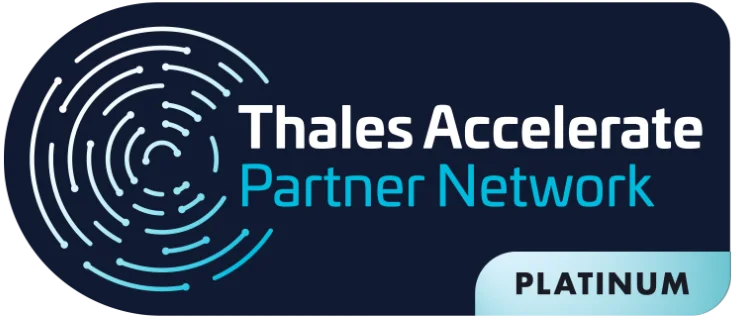Today, huge amounts of personal and financial electronic data are part of our routines. In addition, digital currency flows in payment ecosystems are also present in everyone’s daily lives. After all, billions of transactions are processed every day. Hence the need to invest in Data Encryption for Payment.
In fact, cutting-edge encryption has become so vital for our financial transactions and personal information.
Investing in Payment Data Encryption is Necessary for a Secure Online Financial System
As you may know, the online payment ecosystem is the main target of cybercriminals. In this way, data encryption is necessary to maintain the integrity of interbank transactions and internet sales platforms.
Perhaps what you don’t know yet is the impact of personal data theft. Illegal access to confidential information generates billions of dollars every year.
By default, the payment infrastructure is a very popular target for hackers. However, this scenario changes with attacks on social networks or other sites that have many users. After all, they often store personal information.
Normally, when a consumer enters their credit or debit card details to make a purchase, they remain open when they leave the merchant’s terminal. This data is not protected until it is encrypted at a gateway on the processing platform.
This is a security model that puts the cardholder’s data at risk. After all, they can fall into the hands of cybercriminals who use methods such as network malware. It also puts the entire payments ecosystem at risk.
In a successful data breach, merchants face financial and reputational repercussions with consumers and the market itself.
Thus, symmetric encryption of financial records and data is one of the main resources for guaranteeing a secure online system. Especially when implemented end-to-end in a payment process or in the traffic of personal or confidential data.
Recently there was a huge data leak, in which data from approximately 800 million email accounts was stolen. If you want to check whether your e-mail data has also been stolen, check at: https://haveibeenpwned.com.
Security can be improved through Data Encryption, but it needs to be a priority
Technological solutions are key to protecting the payment system. However, industry collaboration is also an integral component in the collective fight against cybercrime.
Organizations need to prioritize security for several reasons:
- The ease of buying and using services on the Internet has generated a great deal of transaction traffic, mainly consisting of personal and payment data;
- Data encryption is still lacking for payment when important information is stored in the cloud;
- The considerable increase in mobile applications developed and deployed in the cloud has created business opportunities, but many organizations are still learning about the need to protect devices from security vulnerabilities;
- Many organizations still establish partnerships with service providers without investing in security policies and processes to protect users and their personal and payment data.
The result of this scenario is a huge increase in security incidents and data theft, resulting in financial, regulatory, legal, operational and brand compromise implications.
|
|
Data Encryption for Payment: the solution is available to everyone
Despite the risk of virtual attacks and data theft, the solution is available to all companies in the financial sector.
Companies need to become proactive in reducing security threats while accelerating their journey towards digital transformation. They therefore need to adopt flexible, scalable and dynamic platforms to manage the products and services available on the Internet.
Decision-makers – not just IT professionals, but especially executives – also need to understand and commit to shared responsibility for information security.
Encryption of financial records can help secure payment processes
Tokenization and data encryption for payment are examples of security technologies that are strong and play important roles in limiting the current virtual attacks and information thefts that take place in the digital market.
Tokenization technology, for example, replaces sensitive information – such as a credit card number – with a meaningless value or “token” that can be stored in a database. It usually has the same format so that it remains compatible with current card processing systems.
Data encryption for payment goes further, keeping all information out of commercial systems. After all, the transaction chain from the terminal to the bank is fully encrypted.
So when a customer enters their payment details, or an employee swipes a credit card at a terminal, they are encrypted. After that, they can only be opened using a key.
Tokenization and encryption of payment data are valuable tools for protecting sensitive card transaction data. These are solutions that, when implemented efficiently, can provide the highest level of confidentiality in financial transactions and the sending of personal information.
Want to know more about encryption and data protection? Follow our LinkedIn page and keep up with us here on the blog.
About Eval
EVAL has been developing projects in the financial, health, education, and industry segments for over 18 years. Since 2004, we have offered solutions for Authentication, Electronic and Digital Signature, and Data Protection. Currently, we are present in the main Brazilian banks, health institutions, schools and universities, and different industries.
With value recognized by the market, EVAL’s solutions and services meet the highest regulatory standards of public and private organizations, such as SBIS, ITI, PCI DSS, and LGPD. In practice, we promote information security and compliance, increase companies’ operational efficiency, and reduce costs.
Innovate now, lead always: get to know Eval’s solutions and services and take your company to the next level.
Eval, safety is value.







